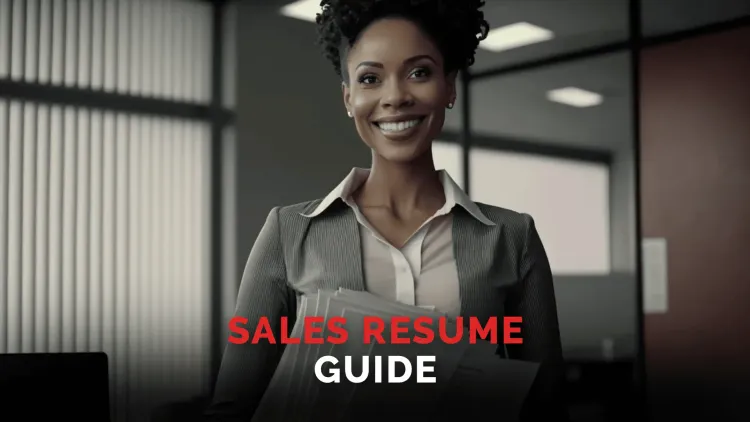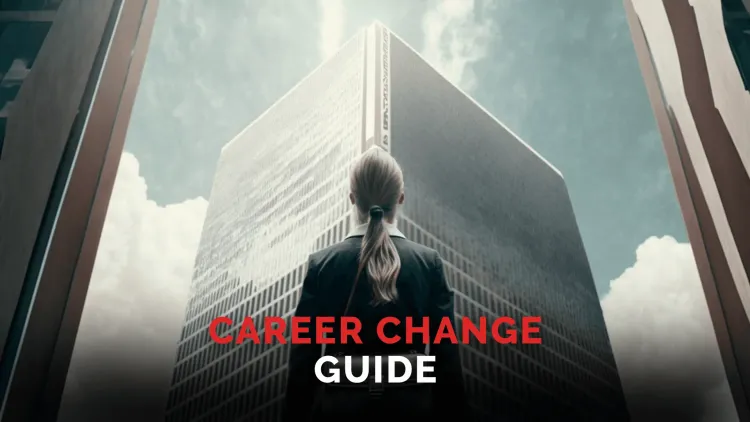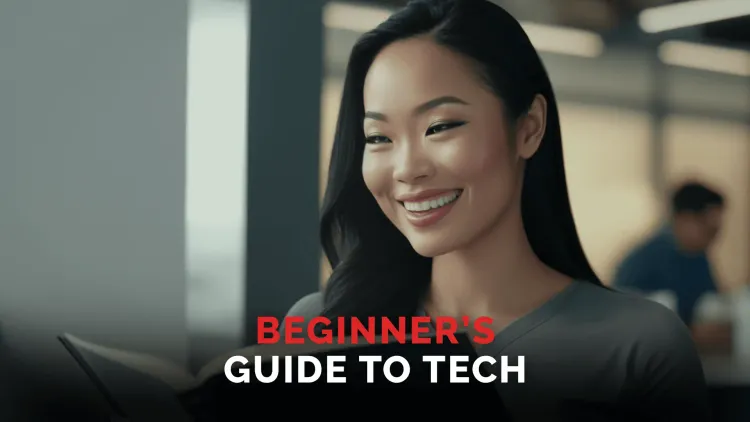Selling With Customer Stories
Learn how to connect with marketing and CS teams to collect those post-sale success stories and use them to make more happy customers!

Aug 23, 2022
Let your customers do the selling for you!
Have you ever wondered how you can turn Happy Customers into More Happy Customers?
Nothing sells better than success. Customer stories show prospects what your product or service can do in real life and the tangible results people like them have achieved. The problem? Once a prospect becomes a happy customer, they drop off the sales radar. This lesson teaches you how to connect with marketing and CS teams to collect those post-sale success stories and use them to make more happy customers.
Selling With Customer Stories Course Modules
Product Demos and Customer Stories
Product Demos And Customer Stories Interview Transcript:
Kelly Winter:Hi, I'm Kelly from Kiite, and I'm back here with Jeff Gadway. We're talking about selling with customer stories today. So welcome back. Thanks for joining us again.
Jeff Gadway:Thank you.
Kelly Winter:And this module is oneffective product demos, and since its part of our selling with customer stories course, maybe you can tell us a little bit about how that plays into product demos and what makes a product demo more effective with customer stories?
Jeff Gadway:Sure. Oh, this is like a hot button topic for me because I've sat through so many bad demos that are like harbor cruises, right? Where you know, the person is just clicking around, trying to show off all their features, and you don't actually get any value out of it. And I think a good product demo needs to be like, well, it needs to be something very different, it needs to be focused on customer needs and customer outcomes and can be further augmented through customer stories.
Let me tell you a little bit what I mean. So we've talked about through this course so far you know how to have better discovery calls using conversational fluency, getting more of the type of information that you need in a more authentic and more genuine way, and that really needs to be the bedrock for a good product demo, right?
Instead of going and clicking around and just showing your product off in chronological order, a good product demo is built around customer needs. So coming out of your discovery call, you should now have a really good sense for what the key kind of strategic objectives are.
And now you can tailor a conversation about your product and how your product enables those strategic outcomes, and the way that you illustrate that you're able to do what you say you do is by then telling customer stories that say, okay, well, I've shown you how we help businesses to do A, B and C through features you know one two and three. Now let me tell you about how customer XYZ, you know, got this value out of it, right?
Does that make more sense; am I making sense here or what?
Kelly Winter:No, it does make sense. And so when we're talking about customer stories, what are you talking about? Are you talking about the nice beautiful case studies that your marketing team puts together, which are high value and slow-moving, they take a lot of time to produce?
Are you talking about testimonials on your website? What kinds of things are you talking about when you talk about using customer stories?
Jeff Gadway:Yeah, it's all of the above. Right? I mean, you know I'm in marketing, I've produced my share of customer you know case studies you know that the beautiful you know printed glossy assets. And while those definitely have their place in the buying journey.
A customer story is anything from, you know, an anecdote to a quote to an outcome that they had or an interaction that you as a sales rep had with one of your customers. So you know I love telling customer stories about what we do atGalvanize, just you know in saying here's a conversation that I had with one of my customers about how we had an impact on their business.
Right. And you know I give a quote that maybe they gave to me, I put it in context, and it's like 30 seconds or a minute. Right. It's the kind of story that you would tell to your best friend when you're when you're on the phone recapping the weekend. Like it doesn't need to be, you know the context, challenge, decision criteria, solution, ROI, right?
I mean those attributes are good elements of like any good storytelling right, providing context showing a challenge, how they overcame it and what the outputs are. I mean, those are good building blocks for any story. But you can boil a customer's story down to its essence and tell it in 30 seconds or less.
Kelly Winter:Right, so atGalvanize, for example, you're probably interacting with you knows more customers and clients than maybe others in your organization.
So you know when you get that good customer story, when you get that sound bite, do you have an effective way to share that with other members of your team? Or say you have somebody new who doesn't have that arsenal of customer stories because they just got to your company, and they haven't had those interactions yet.
So how do you share those, and how do you make them more useful? Case studies are really good because they're on their website and they're in a repository, and everybody has access to them. But the best customer stories sometimes are locked away in your head. So like you were able to, you know, call on some of those really quickly. Can everybody in your organization do that?
Jeff Gadway:Yeah, the best customer stories are kind of like the best camera, and it's the one that you have with you, right there's that saying like the best camera is the one that you have with you at all times, right?
So you know I think every salesperson needs to have some customer stories kind of in their back pocket that they're able to reference very quickly and be able to tell comfortably and confidently the way that we do it with our team is really by making sure that in every meeting every call we share them, right. And we try to distill them.
We don't we don't do for an agency, we don't do case studies in the traditional sense. We try to just sum it up into two or three sentences and then you know make them accessible in a shared repository for our teams so that existing team members can access them, new team members who join our network of providers can quickly find them and search for them through a number of different criteria, right.
Because you know sure, we need to be able to tell stories about people in different industries and how we've serviced them with different business objectives and bit different business needs. So they need to be query-able and a really actionable way too.
Kelly Winter:So when we think about customer stories, I think it's challenging sometimes for people to identify the commonalities between one kind of customer and another kind of customer.
So I can think of an example if you think of regulated industries, so pharmaceutical, healthcare, oil and gas, financial services. So if I was talking to you in the financial services industry, I don't have any customer stories or case studies for financial services. But I might have one for healthcare or pharmaceutical where there's a lot of regulations and a lot of compliance issues.
Do you have any suggestions for how you can kind of enable your team or train them to identify commonalities between different kinds of customer stories and be able to use those effectively if you're talking to a different kind of customer who's same but different?
Jeff Gadway:Yeah, I think one thing that we can do there is, try to look for the underlying business needs or business objectives that are being addressed in the customer story.
So it's less about, I'll give you an example, I'll tell you a customer story. So we recently bid on a piece of business that was a big cultural change management transformation project with a large services business. And we didn't have any specific domain experience with other global recruiting firms, right. But we do have a lot of experience working on internal change projects, cultural transformation projects, and even more to the point, augmenting the capabilities of small bandwidth-constrained teams.
So what we tried to do was focus our experience, and our value add on those similarities out of the context of global recruitment, right. And so you know the way we positioned it was, you know, we understand that what you're looking for is X, Y and Z, which were similar to what we have done. You know we feel that we're able to provide a lot of value in these ways as we have with companies like A B and C, right?
And so we kind of like back-ended into the story by looking at what the common attributes were.
Kelly Winter:Yeah, I think that's interesting. So you know customer stories aren't case studies. But if I think about a lot of software websites and you go to their customer's page, and they have filters, you can filter on industry, you can filter on size.
And I can't think of many where you're filtering on use case or challenge or any of those things. So it sounds like you're recommending that when people are collecting those customer stories, they organize them. I don't love the expression, you know pain based, but…
Jeff Gadway:Right.
Kelly Winter:You know, taking a more pain-based approach and less about the firmographic details about you know that particular customer and more on the use case and the problem you're solving, and then you end up with customer stories that are a little bit more transferable or a little bit more fluid and not as important about you know matching all those photographic details.
Jeff Gadway:Yeah, if you start to think about the firmographic details or the demographic details as more of an overlay and focus primarily on the business objective. I think not only are you going to make your stories more transferable and extensible.
But you're also going to make them more value-added, you're talking about the value that you create, value creation as opposed to something that's very specific to a very specific industry.
Another way I'll put it is, it's like taking the problem-solution approach to marketing. If you take a product problem solution approach and you throw at a pro problem that your buyer either doesn't have or doesn't realize they have, what happens you've already lost them, right?
Whereas if you talk about value and you know common places where businesses in you know similar situations have needs. Now you're able to relate on any number of different dimensions.
Kelly Winter:Yeah, and I can see how that would be really useful during a demo. So you know its fine to still click, it's a demonstration, right? So it's fine to click around and show features.
But to be able to call those customer stories and say, you know one of our customers really loves this feature because it did X for them or this is the most you know requested feature from this group, so we implemented because it's softy for them.
So I think it brings it into reality and they can imagine, how they would use your product to solve their problems?
Jeff Gadway:That's exactly what you're trying to do with a good demo is, try to illustrate your product in use at their company, in their context. So the way that I would reframe a good demo is to start with those need states, right?
So saying you know most often when we work with directors of the young generation, we hear that you know they have needs around you know one of these three areas, or we're gonna show you how we address these three needs, right? And you kind of talk about you know most commonly they need to be able to do A, B and C let me show you how we enable them to do A, B and C, right?
Now you're actually demoing the product, but you're showing features working in conjunction with each other to achieve an outcome. And then I would say you know and actually, while we're talking about this customer X used what I just showed you know exactly, what I just showed you to achieve this outcome, right.
And you tell the story in the context of the product and the business objective that you enable. That's really powerful because now you're not just saying, hey, take my word for it. Our product does it, but you're providing some social proof that backs up what you've just said that you can do. It’s like putting your money where your mouth is, right?
And that, in my opinion, is a far more compelling customer story than just or a more compelling customer story and demo than just saying, hey, here are the features that we do.
Kelly Winter:Right, one last question for you. So you know there's that idea of a canned demo, and you have these things, that you want to hit on presumably if you're doing the more tailored demo, it's based on a discovery you know call or some things that you've uncovered.
But how do you make sure so going back to our previous conversation about conversational fluency adding in customer stories, we can do it really effectively, or it can just become part of the script, right? So it's like I click this button and I talk about this customer story, and now it's now, it's just part of the script, and it becomes less effective.
So how do you kind of balance that line between using them effectively to provide you know color commentary and make people feel good about what they're seeing versus just having it become rote where it's like I click this button and I talk about customer acts?
Jeff Gadway:Yeah, it's a very good point, and I would say a really important linchpin is, once you've understood the need state, talked about how different features or capabilities of your product come together to deliver on that need state, then you need to pause, and you need to say to your prospect or the person that you're demoing to, you know, how would you see this working in your organization, right?
Or you know, do you see this solving the problem that you have or solving the challenge that you have. And that feedback is really important because it allows you to maybe choose the right customer story or choose the right part of a customer story.
Because let's say you know I've teed up a need state, I've shown you how we address that through a couple of different product capabilities, and then I go you know does this look like it would you know meet the need that we talked about in the discovery call. And you go, yeah, but we've got this problem with adoption. We’ve tried adopting products before, and we've blah, right? I'm glad you brought that up.
We worked with company XYZ who had a very similar challenge, and here's how they address that with the help of our implementation and CSM team, right? So you can pick and draw on the customer story or even attribute of that customer story that helps to maybe overcome that hurdle or solidify the value. And in that way, you know you're being a little bit conversationally fluent, right?
Because you might not know exactly what they're going to say, but you've got this repository of customer stories that you've now segmented by, you know, value add or circumstance versus just industry or firmographic detail that you can pull on and kind of insert. So it's still kind of formulaic. But it's done in a much more authentic way.
Kelly Winter:Yeah, that makes sense. So I think that wraps up our conversation today about using customer stories and product demos. You're going to be back with us to talk a little bit about value drivers, and thanks for your time today. And we'll catch up soon.
Jeff Gadway:Sounds great.





